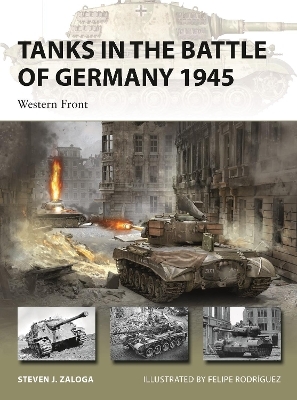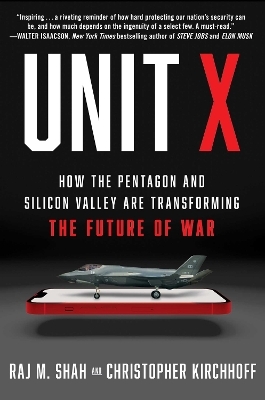
Tanks in the Battle of Germany 1945
Western Front
Seiten
2022
Osprey Publishing (Verlag)
978-1-4728-4811-6 (ISBN)
Osprey Publishing (Verlag)
978-1-4728-4811-6 (ISBN)
The crossing of the river Rhine marked the beginning of the end of the Third Reich, but the Wehrmacht would fight ferociously on its home soil until the fall of Berlin. The Battle of Germany saw the most advanced tanks of the Allies pitted against the remnants of the once-formidable Panzerwaffe, now exhausted and lacking many of the essentials of armored warfare, but equipped with the biggest and most powerful tanks they would ever field.
In these last months the Allies were now equipped with the most advanced Shermans such as the M4A3E8, as well as some of the types that would go on to have successful postwar careers such as the Pershing, Comet, and Chaffee. In contrast the Panzer forces had pinned their hopes on small numbers of monstrous types such as the Jagdtiger and Tiger II, as well as the workhorse Sturmgeschütz and Panzer IVs and Vs. But with German forces crumbling, the Panzerwaffe lacked trained crews, replacement vehicles and fuel, while the Allies’ well-supported tank forces advanced through Germany in spectacular combined-arms fashion.
Packed with information on tank numbers, types, and comparative performance, this book sheds new light on the two sides’ tanks, organization, and doctrine, and explains how the ultimate tank battles of World War II were really fought.
In these last months the Allies were now equipped with the most advanced Shermans such as the M4A3E8, as well as some of the types that would go on to have successful postwar careers such as the Pershing, Comet, and Chaffee. In contrast the Panzer forces had pinned their hopes on small numbers of monstrous types such as the Jagdtiger and Tiger II, as well as the workhorse Sturmgeschütz and Panzer IVs and Vs. But with German forces crumbling, the Panzerwaffe lacked trained crews, replacement vehicles and fuel, while the Allies’ well-supported tank forces advanced through Germany in spectacular combined-arms fashion.
Packed with information on tank numbers, types, and comparative performance, this book sheds new light on the two sides’ tanks, organization, and doctrine, and explains how the ultimate tank battles of World War II were really fought.
Steven J. Zaloga received his BA in History from Union College and his MA from Columbia University. He has worked as an analyst in the aerospace industry for over three decades, covering missile systems and the international arms trade, and has served with the Institute for Defense Analyses, a federal think tank. He is the author of numerous books on military technology and military history, with an accent on the US Army in World War II as well as Russia and the former Soviet Union. He currently lives in Maryland.
INTRODUCTION
THE CAMPAIGN
DOCTRINE AND ORGANIZATION
-Wehrmacht
-US Army
-British/Canadian Armies
TECHNICAL FACTORS
-Wehrmacht
-US Army
-British/Canadian Armies
BATTLE ANALYSIS
FURTHER READING
INDEX
| Erscheinungsdatum | 21.01.2022 |
|---|---|
| Reihe/Serie | New Vanguard |
| Illustrationen | Felipe Rodríguez |
| Zusatzinfo | Illustrated throughout with 40 photos and 8pp of colour illustrations |
| Sprache | englisch |
| Maße | 184 x 248 mm |
| Gewicht | 170 g |
| Themenwelt | Natur / Technik ► Fahrzeuge / Flugzeuge / Schiffe ► Militärfahrzeuge / -flugzeuge / -schiffe |
| Geschichte ► Allgemeine Geschichte ► 1918 bis 1945 | |
| Geschichte ► Teilgebiete der Geschichte ► Militärgeschichte | |
| Sozialwissenschaften ► Politik / Verwaltung | |
| ISBN-10 | 1-4728-4811-X / 147284811X |
| ISBN-13 | 978-1-4728-4811-6 / 9781472848116 |
| Zustand | Neuware |
| Informationen gemäß Produktsicherheitsverordnung (GPSR) | |
| Haben Sie eine Frage zum Produkt? |
Mehr entdecken
aus dem Bereich
aus dem Bereich
colonial violence and new landscapes of resistance
Buch | Softcover (2024)
Pluto Press (Verlag)
28,65 €
how the Pentagon and Silicon Valley are transforming the future of …
Buch | Hardcover (2024)
Simon & Schuster (Verlag)
24,90 €


